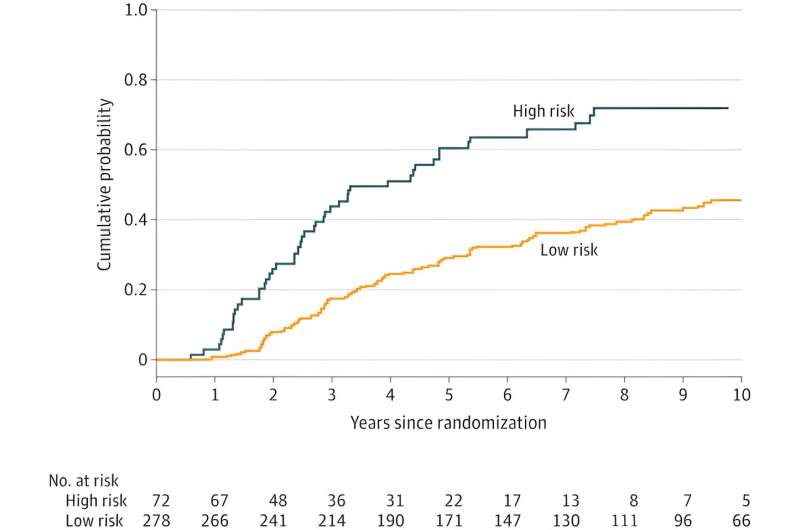October 19, 2023 report
This article has been reviewed according to Science X's editorial process and policies. Editors have highlighted the following attributes while ensuring the content's credibility:
fact-checked
peer-reviewed publication
trusted source
proofread
Prostate-specific antigen failure risk factors in nonmetastatic unfavorable-risk prostate cancer

Research led by the Dana Farber Cancer Institute, Massachusetts, performed a secondary analysis of the Dana-Farber Cancer Institute 05-043 trial. In the paper, "Risk of Short-Term Prostate-Specific Antigen Recurrence and Failure in Patients With Prostate Cancer," published in JAMA Network Open, the team searched for factors associated with shorter time intervals to prostate-specific antigen (PSA) failure in patients with nonmetastatic unfavorable-risk prostate cancer.
The study included 350 patients with nonmetastatic unfavorable-risk prostate cancer. Patients were randomized to receive androgen deprivation and radiation therapy with or without docetaxel. PSA failure was defined as PSA nadir plus 2 ng/mL or initiation of salvage therapies.
The study identified significant factors associated with a shorter time to PSA failure, including age under 70 years, a PSA level of 10 ng/mL or higher, and a Gleason score of 8 to 10.
A high-risk group, defined by these factors, had a substantial (43.8%) risk of PSA failure at three years. The findings indicate that these identified factors can be used to estimate the risk of early PSA failure following initial treatment with androgen deprivation therapy (ADT) and radiation therapy (RT) with or without docetaxel.
All patients received ~73.7 Gy RT to the prostate and seminal vesicles. ADT consisted of a luteinizing hormone–releasing hormone agonist and antiandrogen. ADT was given as two months of neoadjuvant therapy, two months of concurrent treatment with RT, and two months of adjuvant therapy. The use of pelvic radiotherapy was associated with a significant reduction in PSA recurrence.
The findings improve understanding of factors contributing to early PSA failure in nonmetastatic unfavorable-risk prostate cancer. These insights can guide treatment escalation strategies in clinical trials, potentially benefiting patients at high risk for early PSA failure and laying the groundwork for further research into personalized treatment approaches based on the risk factors.
More information: Mutlay Sayan et al, Risk of Short-Term Prostate-Specific Antigen Recurrence and Failure in Patients With Prostate Cancer, JAMA Network Open (2023). DOI: 10.1001/jamanetworkopen.2023.36390
Martin W. Schoen et al, Risk of Recurrence After Radiation in Early Prostate Cancer—Role of Risk Stratification From Prospective Trials, JAMA Network Open (2023). DOI: 10.1001/jamanetworkopen.2023.37111
© 2023 Science X Network


















